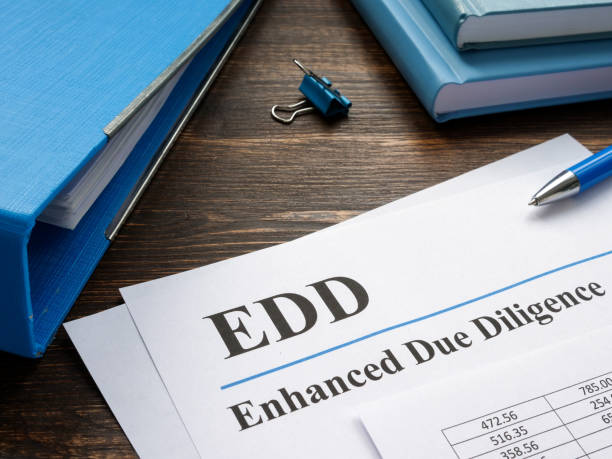Companies dealing with monetary and financial transactions need to keep insights about their clients to know who they are dealing with before onboarding them. This will allow them to remove the potential risks of fraud that can negatively impact their businesses operations. It is also mandatory for financial corporations to incorporate a broader vision by knowing about the interests of the stakeholders, the value of vendors, and the status of third-party associates to figure out miscellaneous criminalities. In the banking sector by identifying the real clients, firms will be able to perform high-risk checks through EDD banking which will eliminate any risk of data breaches harming the financial as well as the reputational authority of the business in the global market.
Is Performing the Due Diligence Necessary for Banks?
Before formulating relationships with other business associations, banks need to check their assets by performing a background check to successfully implement the due diligence financial services. For this purpose, the e-KYC process allows the companies to evaluate the hidden security changes, and identity assurance for ensuring a secure customer onboarding. For opening a bank account or performing money transactions, banks must evaluate their client and deal with them depending on the level of risk they can pose to the business. Low-risk individuals do not have to go through a complex procedure of identity verification as compared to the high-risk individuals who require a more in-depth investigation of their identities.
How is Customer Due Diligence linked with Enhanced Due Diligence?
Whenever a client is onboarded in any financial organization, it should be kept in mind that they should comply with KYC compliance and AML regulations. In addition to that, KYC due diligence is mandatory for all registered banks and economic firms due to the innovation of e-banking facilities to restrict any money laundering activities before it happens. The client due diligence program allows the constant monitoring of the clients and ensures that the type of transaction being carried out by the customer is in the knowledge of the firm. Generally, CDD is performed on low-risk individuals who perform an expectedly less amount of transactions or on whom the organization has complete trust.
While on the other hand, a more advanced version of investigation known as enhanced due diligence is used to perform analysis on individuals who pose a higher level of risk. These clients can consist of government officials, businesses, and corporations who have any suspicious links with terrorist organizations, unlawful authorities, corruption, etc. As declared by FATF (Financial Action Task Force), politically exposed persons (PEPs) are also classified as high-risk and need an intense examination for identity checks before onboarding them.
What are the Situations in Which Firms Should Apply Enhanced Due Diligence?
- The individual can be examined in detail depending on the nature of a new product for which they are applying.
- Upon revealing that a client has a close relationship with a PEP or has a business partner who is interlinked with a PEP.
- Customers who are registered under the high-risk third-party countries who are under sanctions.
- Any connection with a high-risk individual in an industry such as a gambling authority can indicate an individual as high-risk.
- Unusual transaction activity by a client who was ranked as low-risk during the initial customer onboarding.
- Clients who provide stolen or forged documents for establishing a fake identity during the identity and document verification.
What are the Key Takeaways For Executing an EDD Checklist?
Certainly, there are not properly imposed guidelines for carrying an enhanced due diligence program yet there are some basic steps that every EDD checklist should include:
- Understand and categorize your customers depending on their level of risk.
- Broaden the perspective of research to gain additional information about the client.
- Constant monitoring of the background information to update any changes.
- Analyzing the source of funds associated with the client to eliminate any money-laundering activity.
- Organizing the data in an efficient way so that all clients could be in compliance with AML laws and regulations.
Wrapping it Up
Determining the risk factors associated with the clients is an essential part for financial companies before onboarding new customers. By implying customer due diligence for banks to monitor transactions, it will help the businesses to deploy adequate measures by keeping a track of their customers of any suspicious transactions. All high-risk individuals must be dealt with under the e-KYC solution, consisting of an EDD process through which any clients linked with money laundering, corruption, or having associations with terrorist organizations will be eliminated before they could harm the organization in any sense.



